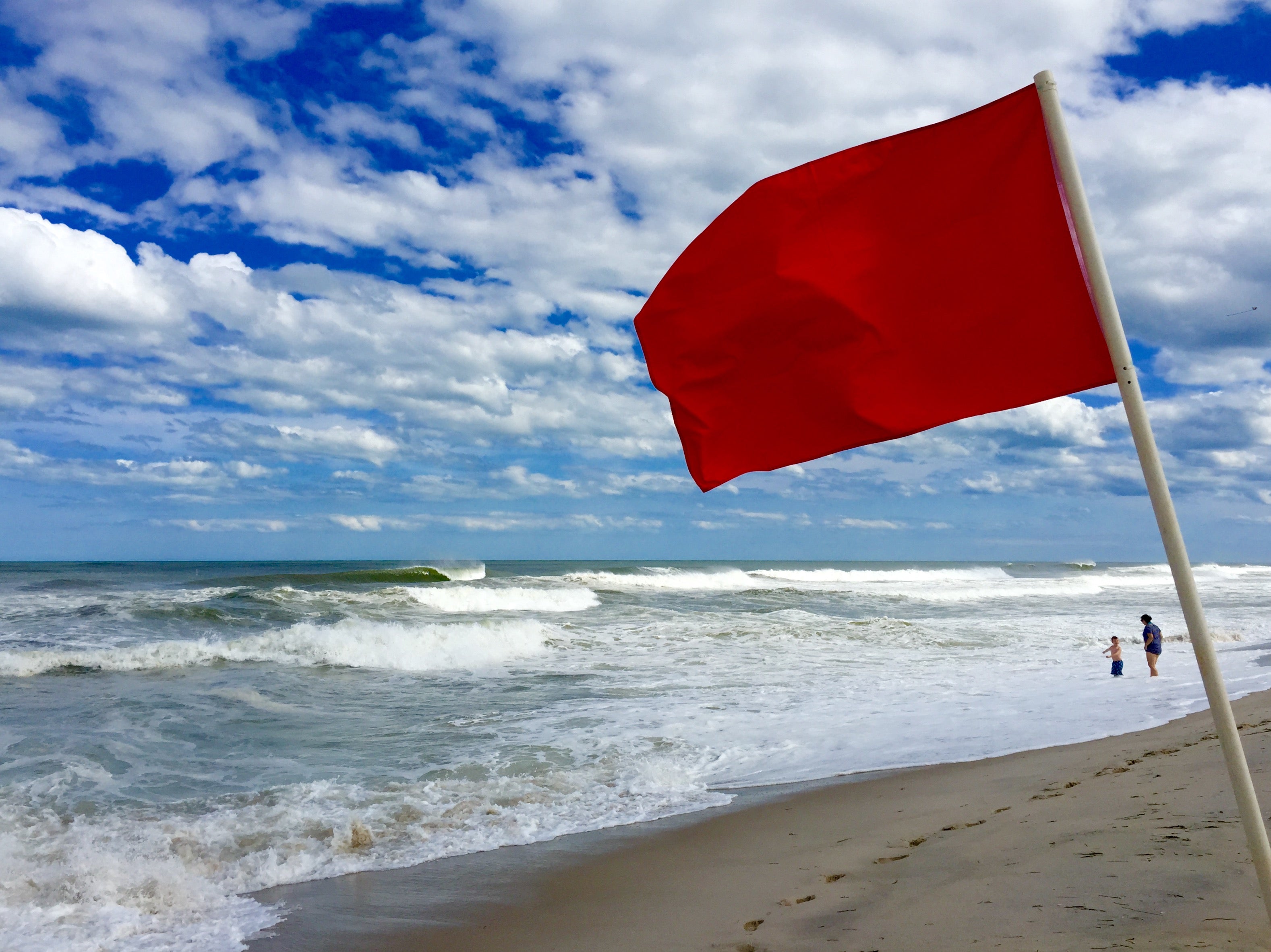NWS: Low risk of rip currents does not imply no risk

(Justin Auciello for WHYY)
With recent drownings and numerous swimmers rescued since last month, forecasters are warning about the daily risk of rip currents.
Last Saturday, a 22-year-old man drowned while swimming off Mantoloking, and the body of a missing teenager was discovered in the Hereford Inlet yesterday.
Beach patrols from Sandy Hook to Cape May have reported dozens of rescues since returning to duty on Memorial Day weekend.
With the Shore population surging every summer and hot days sending scores to the beaches for relief, forecasters want you to know that even calm ocean conditions can be deceiving.
“We cannot overemphasize low risk [of rip currents] does not mean no risk,” wrote National Weather Service forecaster Walter Drag in a recent forecast discussion issued by the local office in Mount Holly. “Transitory and recurrent rip currents occur every day.”
He says to “play it smart and swim safety in the presence of a lifeguard who knows what they’re doing if a rescue is needed.”
Males between 10 and 29 comprise the preponderance of rip current related fatalities, according to the forecaster.
So it’s important to know how to first identify a rip current.
Here’s how:
A channel of churning, choppy water.
An area having a notable difference in water color.
A line of foam, seaweed, or debris moving steadily seaward.
A break in the incoming wave pattern.
Rip current speeds vary, with an average pull of 1-2 feet per second, but some can move as fast as 8 feet per second, which is faster than an Olympic swimmer, according to NOAA. Click here to watch an informative video on rip current safety.
Your first line of defense is to check the surf forecast before you head to the beach. NOAA updates the forecast daily. Also check JSHN for daily beach reports.
If caught in a rip current, NOAA advises:
Stay calm.
Don’t fight the current.
Escape the current by swimming in a direction following the shoreline. When free of the current, swim at an angle—away from the current—toward shore.
If you are unable to escape by swimming, float or tread water. When the current weakens, swim at an angle away from the current toward shore.
If at any time you feel you will be unable to reach shore, draw attention to yourself: face the shore, call or wave for help.
According to Drag, the best prevention is to simply swim at guarded beaches.
“They are there instantly to save lives instead of being notified to later recover,” he said.
WHYY is your source for fact-based, in-depth journalism and information. As a nonprofit organization, we rely on financial support from readers like you. Please give today.

